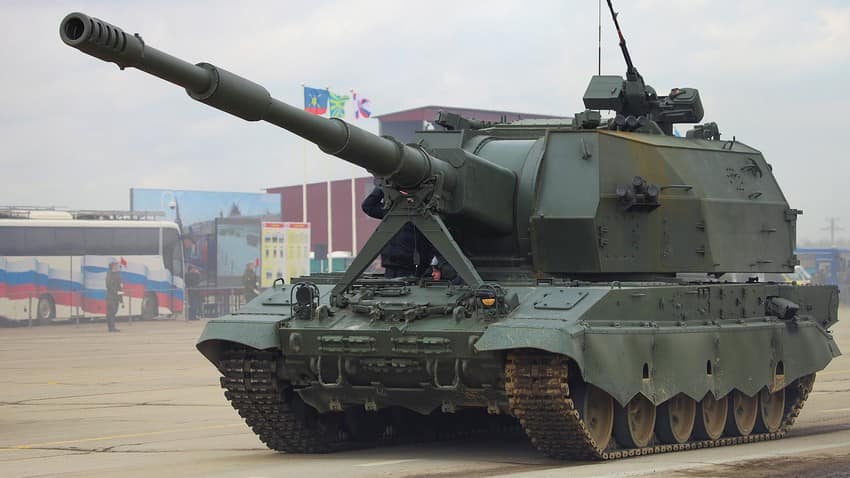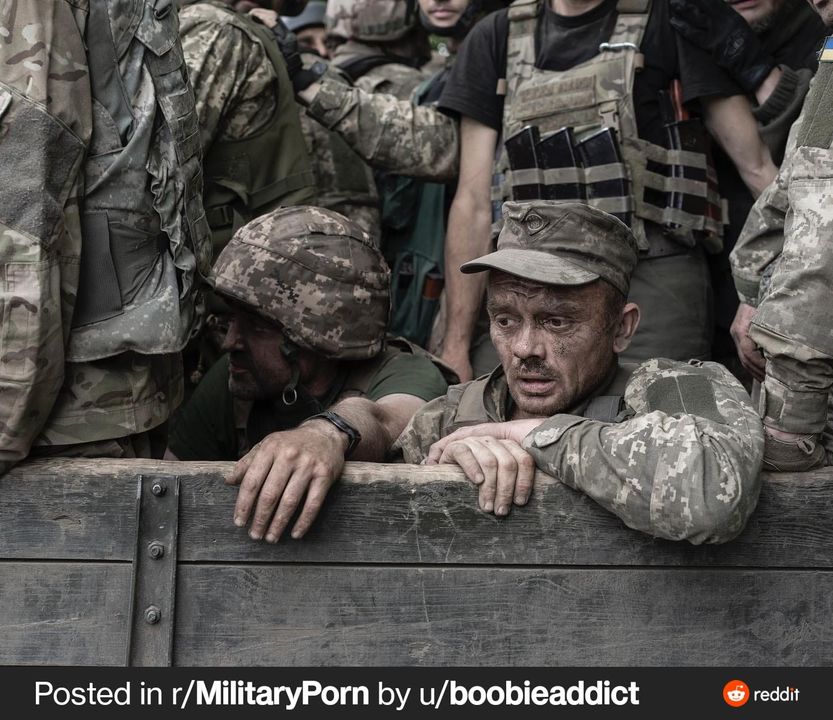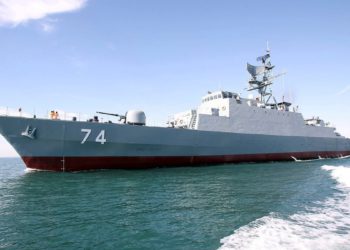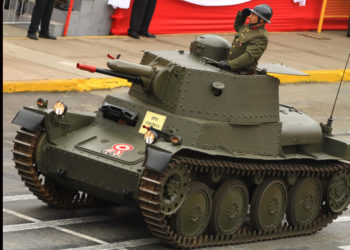Fire Mission! Artillery, Indirect Fires and the Ukraine War: An Overview

With the media and multitude of online community members now talking about the heavy use of Artillery in the current Ukraine-Russian conflict, the time has come to put some context towards what exactly is going on there as well as explaining some of the “art and science” of things.
Previously covered and clarified were Reconnaissance, Security, Logistics and Wet Gap Crossings and now to provide context to all the current talk of Artillery.
Please kindly remember to keep the feedback, thoughts and or opinions constructive and purposeful.
The Situation

Russian forces over the last few months intensified their attacks in eastern Ukraine and are employing a large volume of Indirect Fires.
In simple terms, the “why” is due to the following reasons:
- Ukrainian forces are dug into static positions and are usually garrisoned inside of or adjacent to urban centers, which are often tied to geographical locations, sited on suitable defensive terrain.
Additionally, Russian forces, given their size, simply cannot conduct proper mobile or maneuver warfare as that would require serious augmented forces as well as a result of Ukrainian Army dispositions. Therefore, they have elected to find, fix, and finish the dug-in, defending Ukrainian Army units, which are clearly conducting both delay, and or defend [sic retain] operations. While not fancy, this linear approach is a very common occurrence in war.
Contrary to the common belief that the Russian Army merely lives and exists to shoot blind and dumb rolling Indirect Fires [I label this a Brent Chastain-ism], the actual truth is grounded in their doctrine, which as well shares a similar background with some* Western Army concepts of Indirect Fires… this being the intended application of effects onto target[s] with the expressed purpose to destroy and or defeat enemy forces. Shocking concept!
Target[s] that are static are even more coveted, for obvious reason[s]. Further, heavy indirect fires also help to reduce “Friendly” casualties and aid in helping kill “HPT” or High Payoff Targets, whether that be a mobile Rocket Launcher, an ATGM platoon or what have you in an area termed a “Targeted Areas of Interest” or TAI.
Tactical Aspects on the Ground
- Since Ukrainian forces are defending, in a static fashion and aligned along urban centers of gravity, which are tied to geographical locations that afford defensible and valuable terrain [Key Terrain], broad-based and frontal assaults cannot be seriously considered in a normal sense, due to the prepared engagement areas developed by defending Ukrainian forces. Consideration factors include; turning and mobility obstacles, tank ditches, traps, trenches, interlocking sectors of fire, built up and fortified urban centers, emplaced minefields and other “fun” things to overcome, which all must occur before taking or “seizing” the objective.
Further, given the technical limitations of the Russian Army against Ukrainian forces, a fair fight is not advisable to attempt from the Russian side. No maneuver commander wants a fair fight.
One key advantage Russian forces have against their opponents is massed Indirect Fires. Thus, against a static, defending force with comparable technical direct fire capabilities, the obvious choice will be to employ Indirect Fires against such a force to offset disadvantages and enable offensive operations and options.
But before the “How”, a recap leading up to it.
As previously explained, Russian Sustainment Operations are complex and often forecasted via a push method, which is not necessarily indefensible given their limitations. This basically means that Russia must expend, forecast, surge, cache and stock prior to each new phase of operations, a very challenging process.
The “How” but Not a 101 on Fires Planning

Also, as previously explained, Russia lacks robust ground reconnaissance capabilities and thus must rely on a more cumbersome approach, which centers on an advanced guard of sorts that is tasked with “finding” and “fixing” an enemy in order to employ fires and also to mass forces [tenants of the offense and of war] and to “action on” the enemy and accomplish whatever the commander’s vision and scheme of maneuver might be. This shortcoming also hampers their indirect fires effectiveness immensely as ground reconnaissance units are ideally positioned and suited to identify gaps, seams and weak positions and to call in targets for fire missions more accurately and timely than regular line units and or drones alone.
Once operations ensure, a general rule on how fires are conducted goes like this;
The unit Commander will lay out his objectives, mission and scheme of maneuver, his supporting Fires Officer will plan the fire mission, in support of the Commander’s vision and scheme… prioritizing where and how hard to hit, etc based off of the enemy assessments as well as what the Commander wants to accomplish, as well as what HPT they wish to target. This is then back briefed to the Commander and approved or refined… then the “Execution” commences.
Execution of Fire Missions
Execution often is translated into efforts to achieve the intended end state via Indirect Fire missions as outlined above with the current tactical situation:
- Destruction Fires, which are against materials to include fortifications. This is a requirement since Ukrainian forces are operating in defensive positions, statically and often in built-up areas with prepared engagement areas [revert and read up on EA DEV].
- Interdiction fire missions, which are intended to delay, degrade, destroy and isolate forces. This then allows Russian forces to retain freedom of maneuver, to a degree not had before. A causal example of this is the shelling of mobility corridors or main roads where forces are able to either reinforce or withdraw from. Sometimes it gets dicey as a road may be the main evacuation path while concurrently serving as a main military resupply route [MSR].
Russia also employs neutralizing and suppression fires, which are designed to temporarily reduce the effectiveness of an enemy or their capabilities and cause a modest amount of damage. The principle point with these are that they are a temporary solution or sought effect. A prime example would be to suppress, deny or neutralize ATGM teams or potential PAA locations for Ukrainian counter battery fires.

Russia also employs the widely acclaimed “Prepared Fires” the one most commonly cited one. This type is a mass barrage of Indirect fires to destroy and degrade enemy forces and positions prior to a general attack.
While true, the majority of Russian fires are precisely NOT this as by their doctrine. The reason why is that a major ground assault must commence immediately afterwards. Localized probes, limited efforts etc are not counted as general assaults. Thus, the absence of major ground assaults clearly indicates other objectives and commander intentions, as outlined above, which often are methodical and purposeful, which may eventually shape the conditions which would then lead to a general assault.
Russia is also known to enjoy employing harassing fires… which have a secondary psychological effect and impact on static, defending forces.
Complex Art and Science of Indirect Fire Missions
Back to the process for a moment…
Once targets are identified, assessed, plotted and the “rain” is about to come, the Russian fires process also factors the following;
“Point fires” which are against a specific target(s) like fighting positions, either mounted and or dismounted and are determined by size, scope and effects sought.
“Area Fires” which can be multiple points and a specific area, such as a Target Area of Interest, which is designed to kill HPT’s.
And also but not last, Defensive Fires.
In Russian doctrine, Defensive Fires include FPF and a form of “shaping” fires that can be employed presumably to cover a flank or cover a weakened sector. What this means, in basic terms, is that a suppressive fires mission, neutralization mission or any other can be aimed at an area with the intent to deny or disrupt an enemy counter attack from occurring while *offensive operations* are commencing elsewhere against an enemy.
The entire purpose of this initial part of the series is to give context to the audience. Indirect Fire Missions are a complex art and science. It’s not merely shooting cannons randomly, blindly and dumb.
While other pundits, sites and media commentators throw words around, we provide a deeper context.
And as with the Wet Gap crossing debate with a renowned institution, we here gladly welcome professional discussion and debate, and are even willing to help support their efforts with professional suggestions on where to find answers and are proud of our non-biased assessments and reports.
Lastly, in the comment section, drop a line if anyone wants other topics broken down. Until next time
-Mel Daniels









